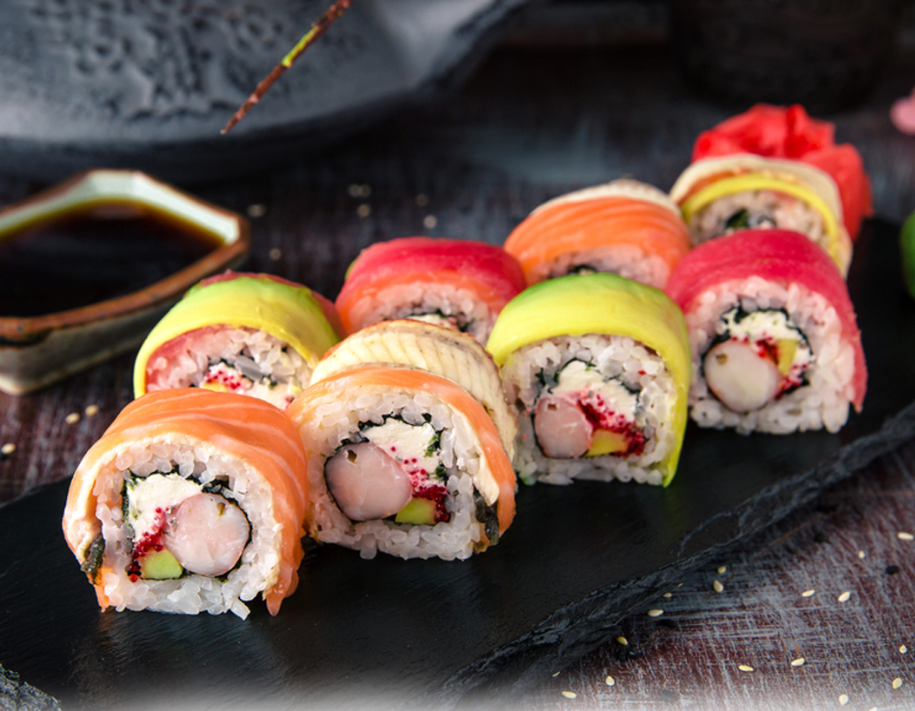If you’re new to the world of sushi, you’re not alone. Sushi has quickly grown from a niche delicacy to a beloved staple in American food culture. Whether you’re dining out with friends, traveling to a new city, or just curious about trying something new, ordering sushi for the first time can feel overwhelming.
With unfamiliar terms, raw fish options, and unique dining etiquette, it’s easy to feel out of place. Don’t worry—we’ve got you covered. In this beginner’s guide, we’ll break down what sushi to try first, what to skip, and how to make your first sushi experience a delicious success.
And if you’re ever unsure where to go, SushiSeek.com helps you find the best sushi restaurants near you—whether you’re home or traveling.
What’s the Difference Between Nigiri, Sashimi, and Rolls?
Before diving into a menu, it’s helpful to understand the basic sushi categories. Here’s a breakdown of the three main types:
- Nigiri: Small hand-pressed rice balls topped with a slice of fish or other seafood (like tuna or shrimp). Often includes a dab of wasabi between the fish and the rice.
- Sashimi: Just the sliced raw fish—no rice included. Great for those who already enjoy the flavor and texture of raw fish.
- Maki Rolls (Makizushi): Traditional sushi rolls with fish, vegetables, and rice wrapped in seaweed and sliced into bite-sized pieces.
If you’re a beginner, start with rolls. They’re often cooked or contain familiar ingredients and are easier on the palate than raw sashimi.
Best Sushi to Try for First-Timers
Not all sushi includes raw fish, and many rolls are designed with beginners in mind. Here are a few popular options that are perfect for easing into sushi:
- California Roll: Made with imitation crab, avocado, and cucumber. Usually cooked, not raw.
- Shrimp Tempura Roll: Fried shrimp adds a crunchy texture and familiar flavor.
- Tamago Nigiri: A sweet Japanese omelet served on sushi rice. No fish involved, and very beginner-friendly.
- Avocado or Cucumber Roll: Vegetarian options that let you ease into sushi without seafood.
Want to explore more beginner-friendly options near you? Use the SushiSeek.com Restaurant Directory to find sushi spots offering classic rolls and cooked choices in your area.
What Sushi Should Beginners Avoid?
When you’re new to sushi, it’s smart to avoid certain items until you’re more comfortable with the flavors and textures:
- Sashimi (raw fish only): An acquired taste—best tried after you’re used to sushi rolls.
- Uni (sea urchin) or Natto (fermented soybeans): Adventurous items even for seasoned sushi lovers.
- Spicy Rolls: If you’re not a fan of heat, skip these until you know your spice tolerance.
- Strong-smelling fish: Fish like mackerel (saba) can be intense for first-timers.
Instead, stick with rolls that include cooked ingredients or vegetables until you build confidence.
Sushi Etiquette: Do’s and Don’ts at the Sushi Bar
Here are some helpful sushi etiquette tips to make your first visit smooth and respectful:
Sushi Do’s:
- Use your hands or chopsticks—both are acceptable.
- Eat nigiri in one bite, or two at most.
- Dip fish-side down into soy sauce to preserve the rice texture.
- Thank the chef if you’re sitting at the sushi bar.
Sushi Don’ts:
- Don’t rub your chopsticks together—it implies they’re cheap.
- Don’t mix wasabi into soy sauce unless it’s customary at that restaurant.
- Don’t overload your sushi with sauce—it masks the flavor.
Learning the cultural etiquette around sushi enhances the experience and shows respect for the chef’s craft.
How to Tell If a Sushi Restaurant Is High Quality
Not all sushi restaurants are created equal. Here’s how to spot a good one—even if you’re in a new town:
Signs of Quality Sushi Restaurants:
- Fresh smell: A good sushi spot shouldn’t smell fishy—it should smell clean and fresh.
- Visible cleanliness: Check counters, prep areas, and the sushi chef’s station.
- Customer volume: Busy restaurants typically have fresher ingredients.
- Menu clarity: Beginner-friendly places clearly label items as cooked or raw.
If you’re unsure, check reviews or browse the top-rated sushi spots on SushiSeek.com. Our platform features local ratings, photos, and searchable filters so you can always find the perfect sushi spot—no guesswork required.
Final Thoughts: Your First Sushi Experience Doesn’t Have to Be Intimidating
Trying sushi for the first time should be an adventure, not a challenge. Start with familiar options like California rolls or tamago, avoid raw or exotic dishes at first, and follow basic etiquette for a smooth experience.
As you grow more confident, branch out into sashimi, specialty rolls, and even develop a favorite local sushi chef.
Ready to explore the world of sushi near you? Use SushiSeek.com to find local sushi spots, browse menus, read reviews, and discover hidden gems wherever you go.

